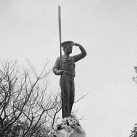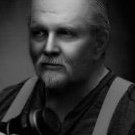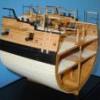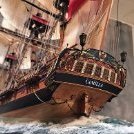-
Posts
2,940 -
Joined
-
Last visited
About thibaultron
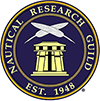
- Birthday 04/11/1955
Profile Information
-
Gender
Male
-
Location
Warrenville, SC
-
Interests
Ship, plane, and train modeling, history, science.
-
 thibaultron reacted to a post in a topic:
Interesting ship related book with interesting signature inside
thibaultron reacted to a post in a topic:
Interesting ship related book with interesting signature inside
-
 thibaultron reacted to a post in a topic:
Interesting ship related book with interesting signature inside
thibaultron reacted to a post in a topic:
Interesting ship related book with interesting signature inside
-
 thibaultron reacted to a post in a topic:
Interesting ship related book with interesting signature inside
thibaultron reacted to a post in a topic:
Interesting ship related book with interesting signature inside
-
 thibaultron reacted to a post in a topic:
Adding color to plans
thibaultron reacted to a post in a topic:
Adding color to plans
-
 thibaultron reacted to a post in a topic:
Adding color to plans
thibaultron reacted to a post in a topic:
Adding color to plans
-
 Canute reacted to a post in a topic:
Arado Ar-196 by Ian B - PLASTIC - German seaplane
Canute reacted to a post in a topic:
Arado Ar-196 by Ian B - PLASTIC - German seaplane
-
 Jack12477 reacted to a post in a topic:
Arado Ar-196 by Ian B - PLASTIC - German seaplane
Jack12477 reacted to a post in a topic:
Arado Ar-196 by Ian B - PLASTIC - German seaplane
-
 AJohnson reacted to a post in a topic:
Arado Ar-196 by Ian B - PLASTIC - German seaplane
AJohnson reacted to a post in a topic:
Arado Ar-196 by Ian B - PLASTIC - German seaplane
-
 Ian B reacted to a post in a topic:
Arado Ar-196 by Ian B - PLASTIC - German seaplane
Ian B reacted to a post in a topic:
Arado Ar-196 by Ian B - PLASTIC - German seaplane
-
 Old Collingwood reacted to a post in a topic:
Arado Ar-196 by Ian B - PLASTIC - German seaplane
Old Collingwood reacted to a post in a topic:
Arado Ar-196 by Ian B - PLASTIC - German seaplane
-
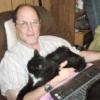
Arado Ar-196 by Ian B - PLASTIC - German seaplane
thibaultron replied to Ian B's topic in Non-ship/categorised builds
This site has a a download for a 1/32 catapult for your plane. https://cults3d.com/en/3d-model/game/1-32-catapult-for-ar-196?srsltid=AfmBOopjPiW1PObYmJ4LTa_i9BiZmiKRNl3uQHpk2HqH03CkxE76Mnn_ Maybe not an exact model of Bismark's, but still one for a German ship. -

Arado Ar-196 by Ian B - PLASTIC - German seaplane
thibaultron replied to Ian B's topic in Non-ship/categorised builds
The 1/32 looks great! For those who are building smaller versions, Distefan 3D Print, offers the Bismark catapult assembly in 1/72nd and smaller scales. I'm hoping to get their 14" 45 caliber (Used on at lest the USS Arizona, and Pennsylvania) Turret and catapult model in 1/72nd, though the ~325 price is going to be hard to find. I built the Arizona in 91 for my RC Combat competitions, and want a model of one of her turrets in 1/72nd to match my other Takoma turrets. -
Determine the length using the drawn bore width as a meteric.
-
Fantastic work! These are at a fantastic level of detail! Have you tried Zipping/Compressing the STL file to reduce the size?
-
Great work! Thanks for sharing them!
-
I save my work several times during a session upping the "Revision" number each time (i.e. File_011.f3d, File_002....). This allows me to both not loose the last X (mins, hours) time of work, if the computer or program hiccups, (or a cat jumps on my keyboard), or I think of a better way to do an operation. And Yes, I have some of my projects that have run into hundreds of revision files. I can always delete or Zip them when I finish. Do not be afraid to go back and redo something, if you find new information/details during the design, or something you did does not print and fit like you thought.
-

3D Printing Cannons in Resin
thibaultron replied to thibaultron's topic in 3D-Printing and Laser-Cutting.
I run piece of wire or wood into the bore and touch hole to get any resin out, and print with the muzzles pointing away from the plate to encourage the resin to drip out. Holding the barrel in a pool of cleaner while cleaning the bore helps. I let the cannons dry over night, after final cleaning, before curing them. This allows any moisture in the barrel to dry, and not have liquid run out and mar the exterior surface. For larger scales I have an UV LED that run into the barrel, to insure the bore is cured. I think I detailed these steps earlier in this thread. -
Bragdon Weathering Powders, are more expensive, but are made from finely ground real materials, like the Rust is finely ground rust. They also have a pressure sensitive adhesive, so will stay on the surface, and be less susceptible to being rubbed off after application. With any of these a light coat of flat clear should be concidered to lock the powders in place.
-

San Francisco cable car by kgstakes - FINISHED - OcCre
thibaultron replied to kgstakes's topic in Non-ship/categorised builds
If the real cars have them painted, I vote for that. -

3D Printing Cannons in Resin
thibaultron replied to thibaultron's topic in 3D-Printing and Laser-Cutting.
About us
Modelshipworld - Advancing Ship Modeling through Research
SSL Secured
Your security is important for us so this Website is SSL-Secured
NRG Mailing Address
Nautical Research Guild
237 South Lincoln Street
Westmont IL, 60559-1917
Model Ship World ® and the MSW logo are Registered Trademarks, and belong to the Nautical Research Guild (United States Patent and Trademark Office: No. 6,929,264 & No. 6,929,274, registered Dec. 20, 2022)
Helpful Links
About the NRG
If you enjoy building ship models that are historically accurate as well as beautiful, then The Nautical Research Guild (NRG) is just right for you.
The Guild is a non-profit educational organization whose mission is to “Advance Ship Modeling Through Research”. We provide support to our members in their efforts to raise the quality of their model ships.
The Nautical Research Guild has published our world-renowned quarterly magazine, The Nautical Research Journal, since 1955. The pages of the Journal are full of articles by accomplished ship modelers who show you how they create those exquisite details on their models, and by maritime historians who show you the correct details to build. The Journal is available in both print and digital editions. Go to the NRG web site (www.thenrg.org) to download a complimentary digital copy of the Journal. The NRG also publishes plan sets, books and compilations of back issues of the Journal and the former Ships in Scale and Model Ship Builder magazines.



